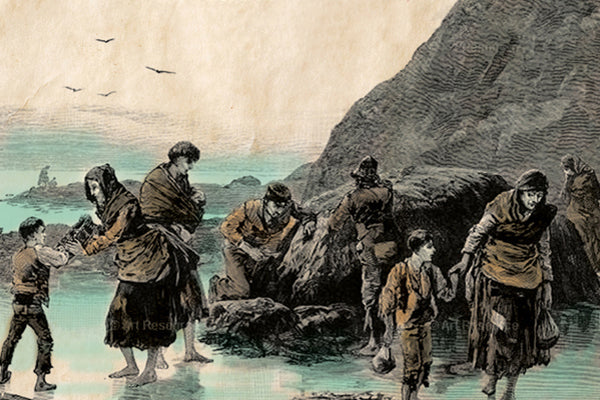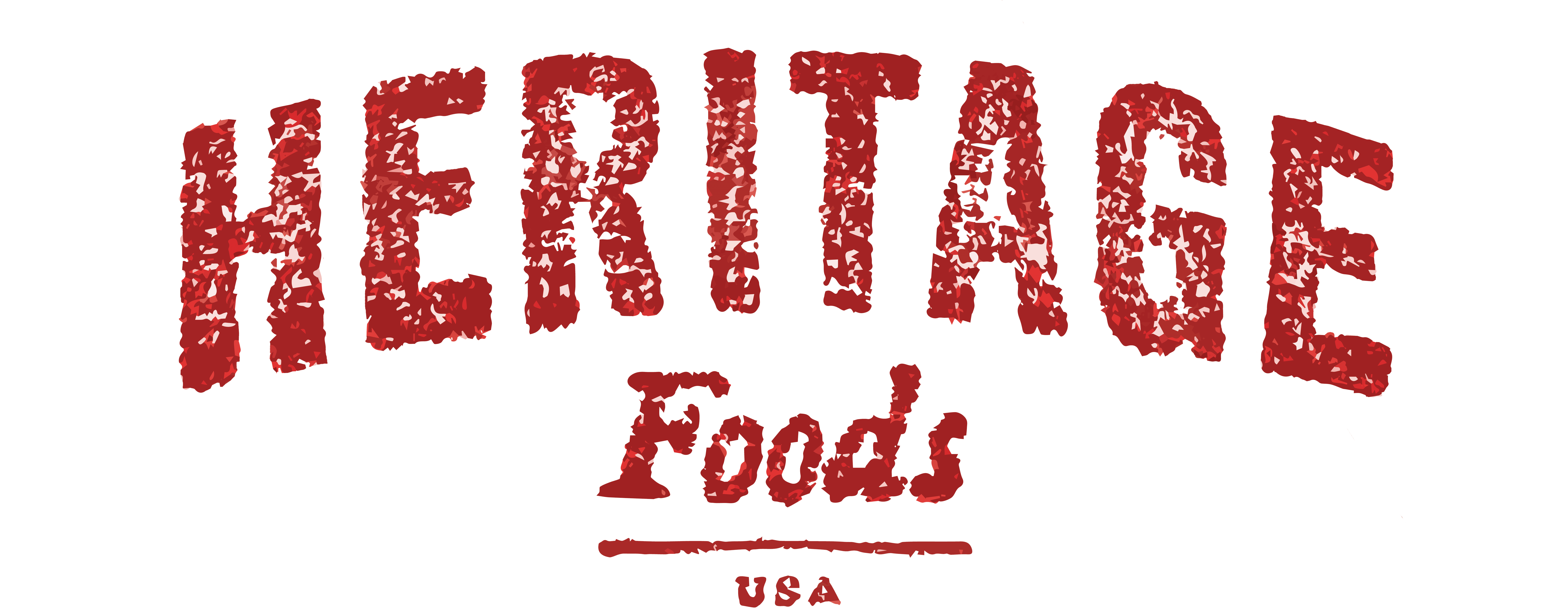
The Great Potato Famine
The history of Irish food is interesting for more than just the delicious combinations of meat, potatoes and alcohol but also for the lessons we must learn from the great tragedy of the Irish Potato Famine. Between 1845 and 1852 over one million Irish peasants died of starvation and another million fled the country hoping for fuller bellies. While there were many political and social factors leading to the terrible scale of this tragedy, everything started with nearly 3 million Irish peasants subsisting on a single strain of plant in their fields, one variety of the potato. This great tragedy hits close to home here at Heritage Foods USA as we support farmers fighting against the pressure of moving toward a monoculture food system.
The story of the Great Famine starts in 5,000 BC in the South American highlands where the potato was first domesticated by humans. The potato then travelled across the Atlantic ocean on the ships of Spanish conquistadors, finally reaching Europe in 1570. Most Europeans avoided potatoes initially because of the close connection to the poisonous nightshade plant. Eventually the aristocracy realized the potato had a high caloric value that could sustain as many as 10 people on a acre and was easier to grow than wheat. Though slow to be adopted in mainland Europe, once the potato was brought to Ireland it quickly replaced a more diverse agricultural landscape as peasants sought to subsist off of smaller and smaller plots of land.
While the potato fields were still abundant many peasants exclusively ate potatoes, only supplementing with milk when they could afford the splurge. In order to meet their caloric needs a “burly farmer could down 15 potatoes” in a meal, according to one historical account. A spud filled diet might not have been the most enjoyable for the Irish, but it was feeding them until the early 1800’s when the first issues with the blight (Photophthora infestans) began to affect Ireland. The arrival of the fungus combined with unseasonably wet weather caused regional crop failures. Potato plants would wither and blacken while the tubers themselves were rotting in the soil. Then in late August of 1845, “a queer mist came over the Irish country side”. What had been a sporadic issue soon swept the country and by 1846 there were hardly any seed potatoes to plant in the fields let alone to eat. This country-wide crop failure continued for several years and while the blight was impacting potato plants in countries across Europe, Ireland faced the largest human toll.
More than a century later Irish eyes are smiling once again, but there is so much that can be learned from this preventable tragedy. The Great Famine is one in a long list of crop failures, though it cost the most human lives. In the 19th century four million acres of French grapes were decimated by the virulent Phylloxera vitifoliae. This same disease cost the winemaking counties of California millions of dollars as 70% of their crop came from the same rootstock. In the 1930’s Costa Rica’s banana industry nearly went bankrupt after Fusarium oxysporum destroyed thousands of hectares of their monoculture plantations. Failing to learn from their mistakes, these banana growers have faced recurrences of the disease in the 1950’s, 1970’s and 1990’s. In the 1970’s uniform high-yielding corn hybrids comprised about 70% of all corn varieties in the United States. A corn leaf blight resulted in the loss of 15% of the entire crop costing the industry over one billion dollars. History has shown us time and time again that while these high-yielding crops seem appealing at first, in monoculture we are setting ourselves up for potentially catastrophic crop failure
The economic risk and environmental toll of these monocultures is simply too great. Thousands of years of agriculture have resulted in a beautifully diverse array of plants and animals uniquely adapted to different climatic conditions. It is only through the preservation of this diversity that we can truly foster a food-secure future.
